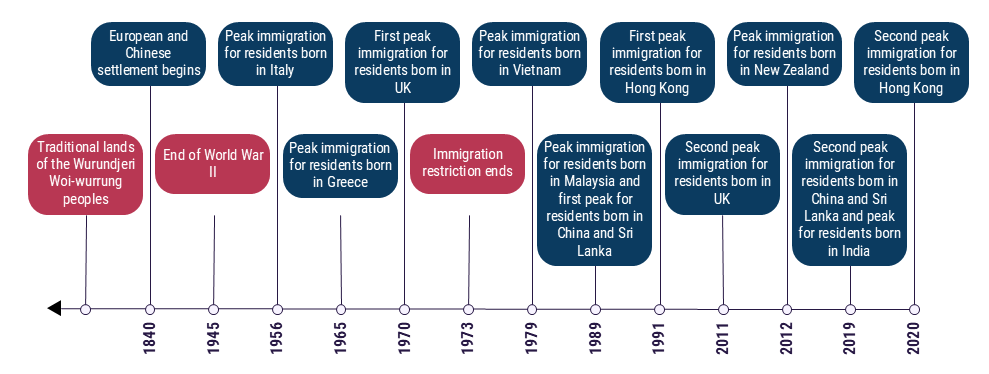The role of multiculturalism in Australia
The role of multiculturalism has been recognised as one of the ‘three stories of Australia’ which includes:
- Indigenous heritage: This story recognises Aboriginal and Torres Strait Islander peoples as the First Nations of Australia, and acknowledges their ancient laws, customs, and connection to the land, which date back over 65,000 years. Council’s role and response to this story is outlined in our Boroondara Reconciliation Strategy 2022-2026.
- British institutions: The second story relates to the institutions, cultures and rule of law (legal and political systems) that were established as a result of British colonisation, and continue to shape modern Australia. Council’s system of governance (including the Local Government Act 2020) is a result of this heritage.
- Multicultural migration: The third story celebrates the waves of immigrants from various parts of the world who have contributed to Australia’s cultural diversity. This story highlights the contributions of these communities to the social, economic, and cultural fabric of the nation. The Boroondara Multicultural Action Plan 2024-26 supports efforts at the local level for a peaceful community with high levels of cohesion, understanding and vibrancy.
Waves of settlement and migration
The area that is now Boroondara is on the traditional lands of the Wurundjeri Woi-wurrung people whose ancestors had lived on this land for millennia. The City of Boroondara’s name comes from the Woi-wurrung language, which means ‘where the ground is thickly shaded’.
European settlers first arrived in 1840, coming from countries like England, Scotland, Wales, Ireland, and China.
After World War II, many people from Italy and Greece moved to Australia. 81% of our Italian and Greek communities moved here before 1975.
The end of immigration restrictions in 1973 saw increasing numbers of settlers from Sri Lanka, Vietnam, Malaysia and China.
Most Boroondara residents who settled in Australia during the 18 months before the 2021 Census were born in China (33.6%), India (12.4%) or Hong Kong (6.7%).
The shifting pattern of cultural diversity in Boroondara has resulted in different age profiles among different cultural groups. The median age of residents born in Greece and Italy is much higher than the median age of residents born in India. This is because peak migration from Greece and Italy occurred in the 1950s and 1960s as opposed to peak migration in 2019 for those born in India.
More than half of Boroondara's residents are second-generation Australian. 56.2% or 94,338 residents have one or both parents who were born overseas compared with 60.6% of Greater Melbourne residents.

Waves of settlement and migration.